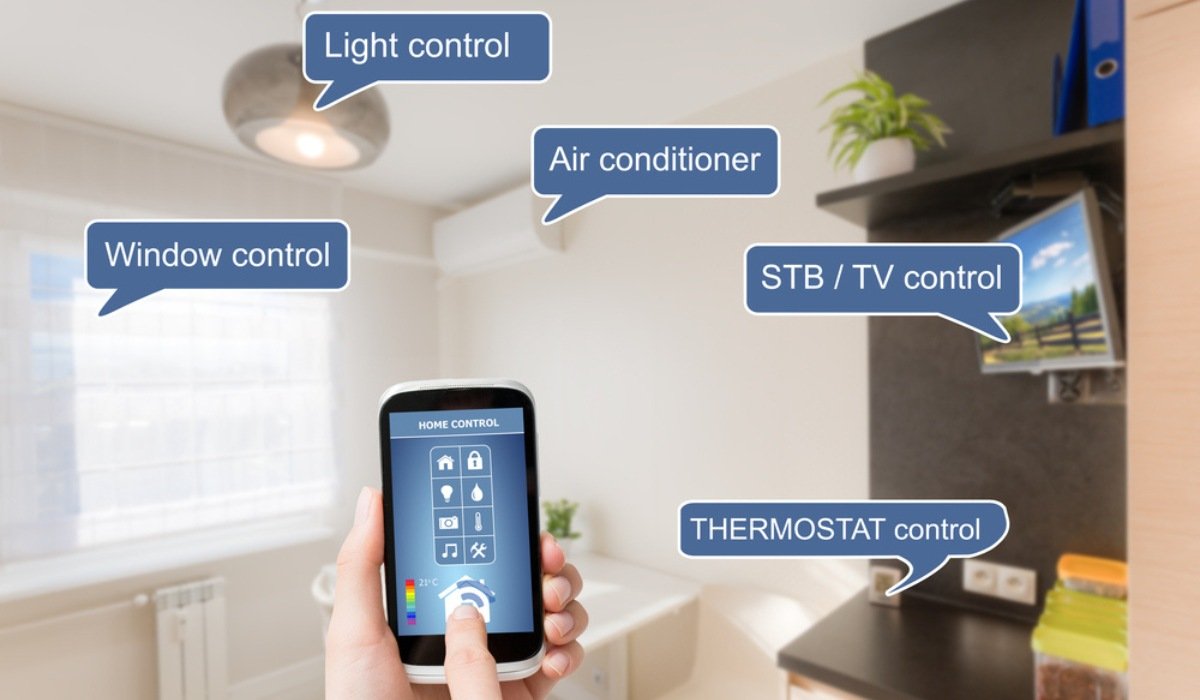In an era of rapid technological advancements, ‘smart homes’ have become a tangible reality. With the increasing integration of Internet of Things (IoT) devices and intelligent automation systems, smart home technology has emerged as a pivotal factor in revolutionizing the real estate industry. It may seem counterintuitive to invest in the current market backdrop, riffed with unprecedented levels of inflation and interest rate regimes. However, there are several economically viable reasons to deploy smart home technology in the current environment.
What encapsulates Smart Home Technology?
Smart Home Technology simply refers to a network of intelligent home devices designed to automate daily appliances. This umbrella term encapsulates everything from popular virtual assistants, like Amazon Alexa, Google Home, and the Apple HomeKit, to smart thermostats and high-tech home security systems. Customised to personal needs, preferences and budget, smart home automation delivers enhanced comfort, security and energy efficiency.
A demographic variable to be considered
Buyers’ age is a key demographic variable to be considered by real estate stakeholders. The majority of current homebuyers and renters are millennials in the age bracket of 25-45 years. Studies indicate that this generation has widespread use for and comfort with technology, making them the most tech-savvy group to date. At the heart of this transformation lies the desire to create a nurturing abode, which reflects their aspirations and accomplishments. This generation seeks to upgrade their lifestyles with modern amenities and features that enhance their daily experiences. In essence, millennials seek more than just a place to reside – they want a space that nurtures and inspires them.
Therefore, as service providers continue to constructively address the challenges of complexity, cost and privacy, smart home technology will make advances for wider adoption, presenting massive growth prospects.
For instance, smart heating and lighting systems can analyse household usage patterns and optimise performance. These features help in slashing monthly energy bills and providing a green alternative by reducing carbon footprints. For the property, this translates into improved energy efficiency ratings and value, which in the wake of an ongoing global energy crisis, serve as attractive attributes for potential buyers. The same holds true for smart cameras and door lock technologies. As the NCRB suggests, robberies, burglaries and thefts continue to plague the country, which makes home security and safety a constant concern. Security cameras with sensors act as round-the-clock guards that send notifications and live feeds to your mobile devices.
Smart security and safety devices and their selling value
Smart door locks allow you to access your home remotely and ensure that the door is locked in case of doubt. This ability to monitor your home remotely gives a sense of security and protection that unquestionably contributes to the house’s value. Some of the other types of smart home technology that make good selling points include smoke detection sensors, carbon monoxide detectors and water leakage detectors. These devices save cost and time by triggering maintenance needs before the problem grows out of proportion.
While smart home devices can increase property demand and sale propensity, understanding their adoption rates is crucial before making the investment decision. Globally, the smart home market is projected to grow at a CAGR of 10.0% from 2023 to 2028, increasing its market size from USD 101.7 billion in 2023 to an anticipated USD 163.7 billion in 2028. In India, there were nearly 13 million smart homes in 2022. An additional 12.84% penetration of smart home solutions is expected by 2025. Although the penetration of smart home devices in India is lesser than in Western countries, the pandemic has aided the shift from a convenience-driven mindset to a necessity-driven mindset. Hence, this has accelerated the adoption of connected devices in the country.
Conclusion
Thus, if you are looking to maximise your property value, focus on more than just stylish layouts and interiors. Begin with the installation of devices with proven Return on Investment, like smart lighting, meters and security systems, before investing in full-scale integration. As smart home technology gets increasingly factored into the appraisal of property sales and shortens sales cycles, modern India would need to embrace digitisation on a large scale.
(The author is CEO, Piramal Realty)
| Got any questions or point of view on our article? We would love to hear from you. Write to our Editor-in-Chief Jhumur Ghosh at [email protected] |











